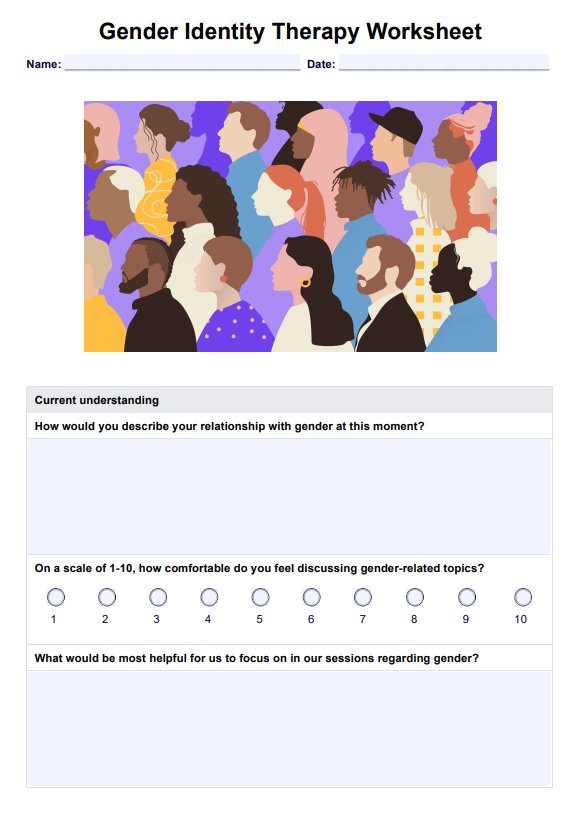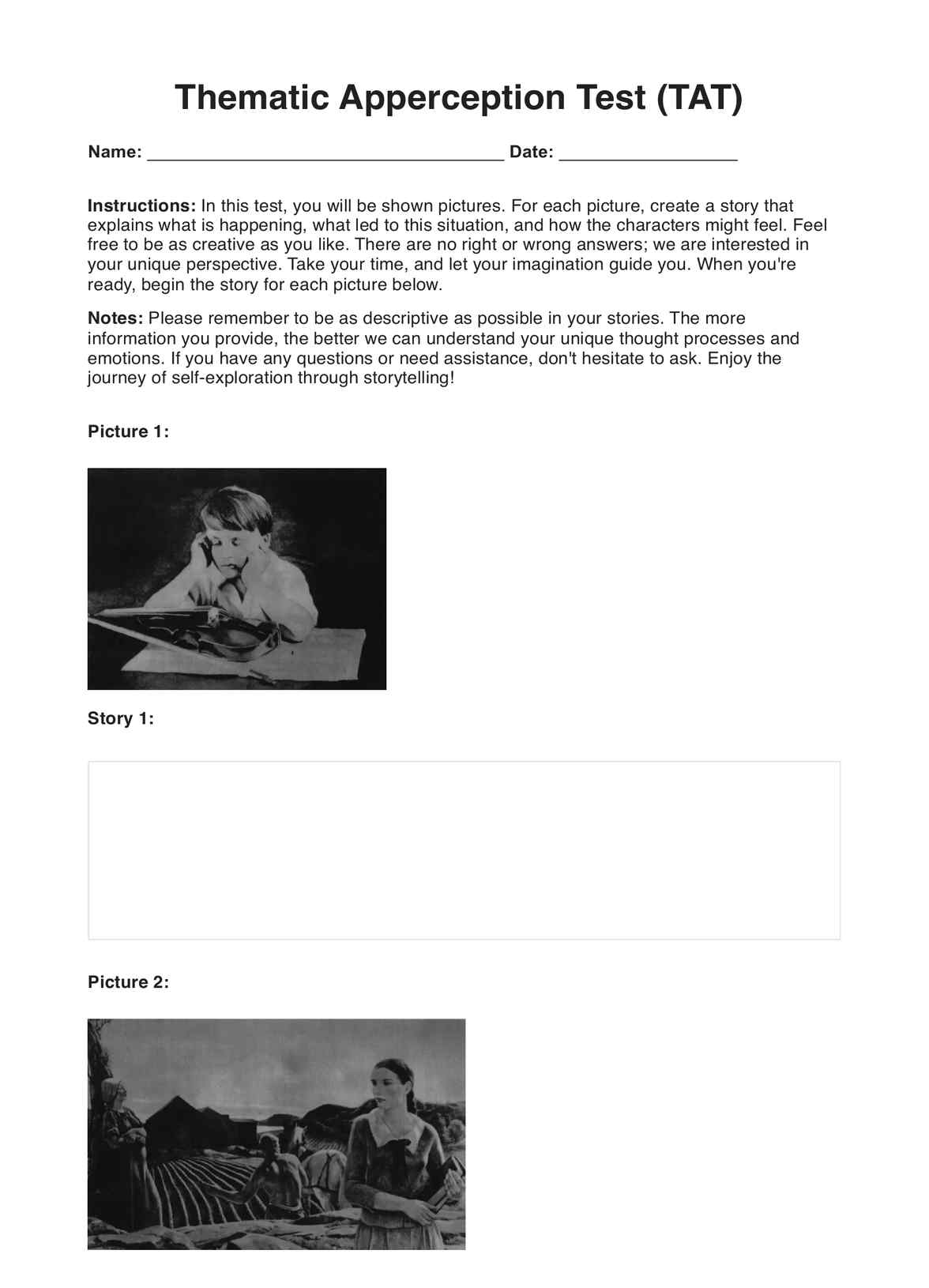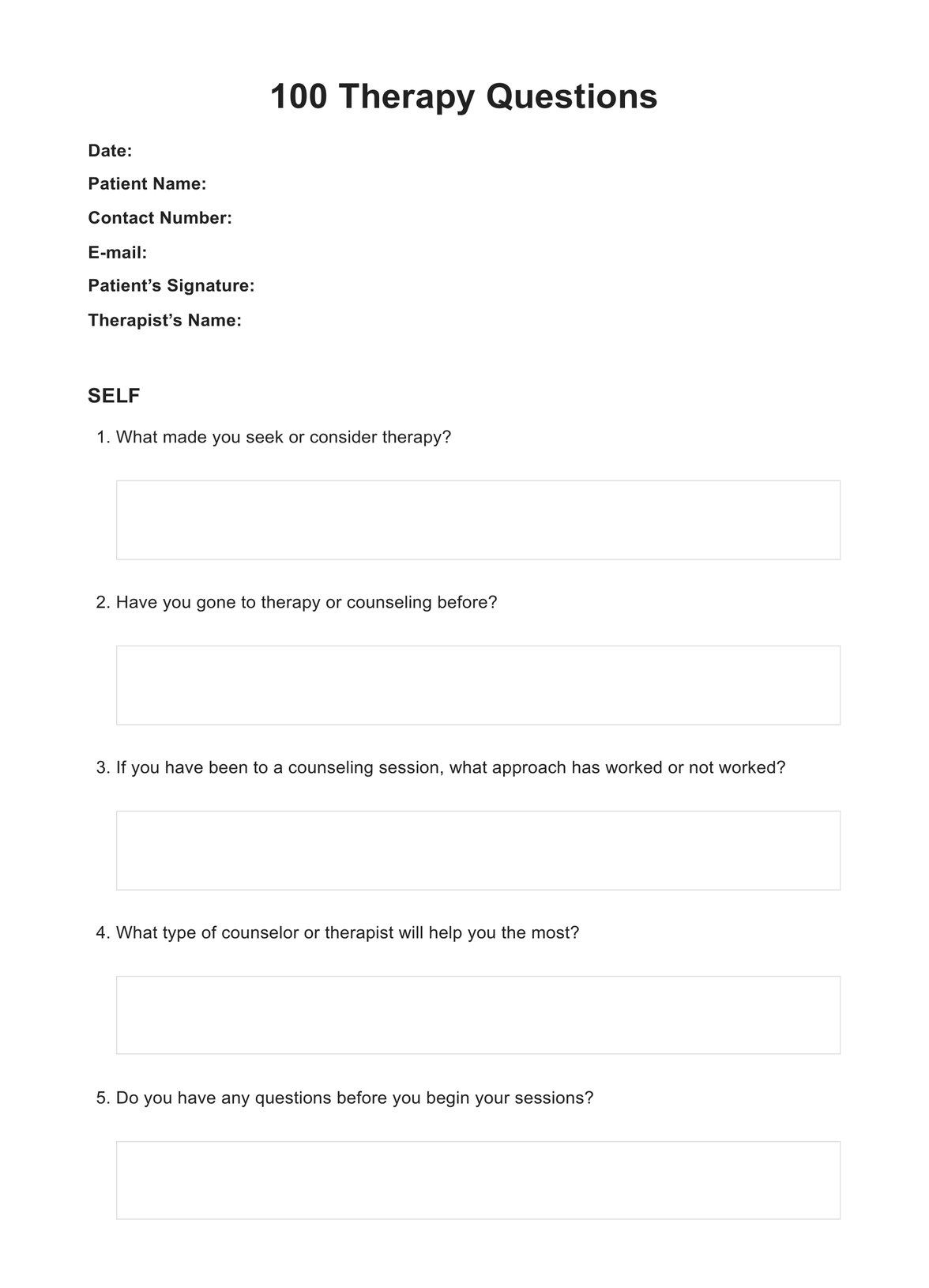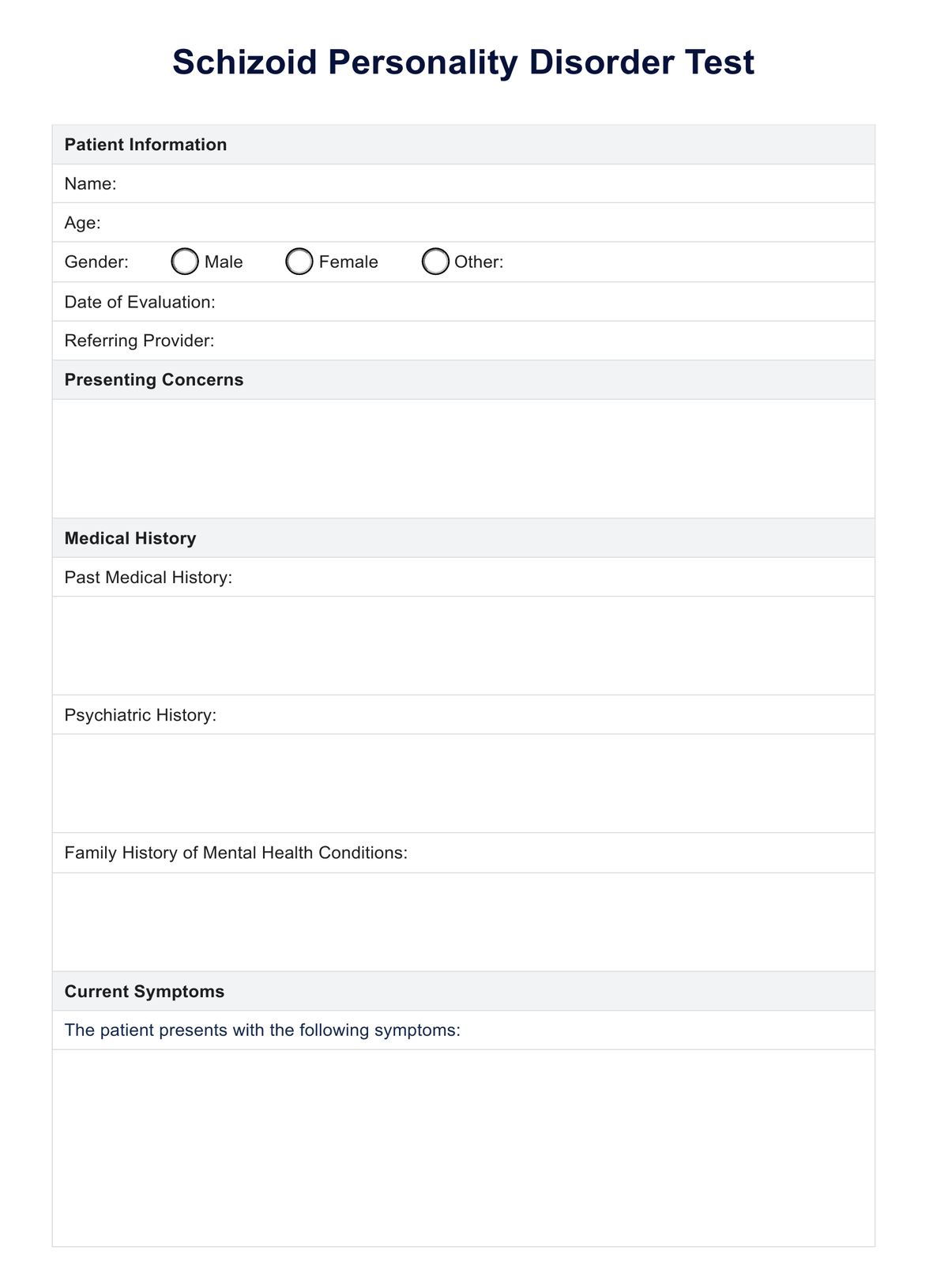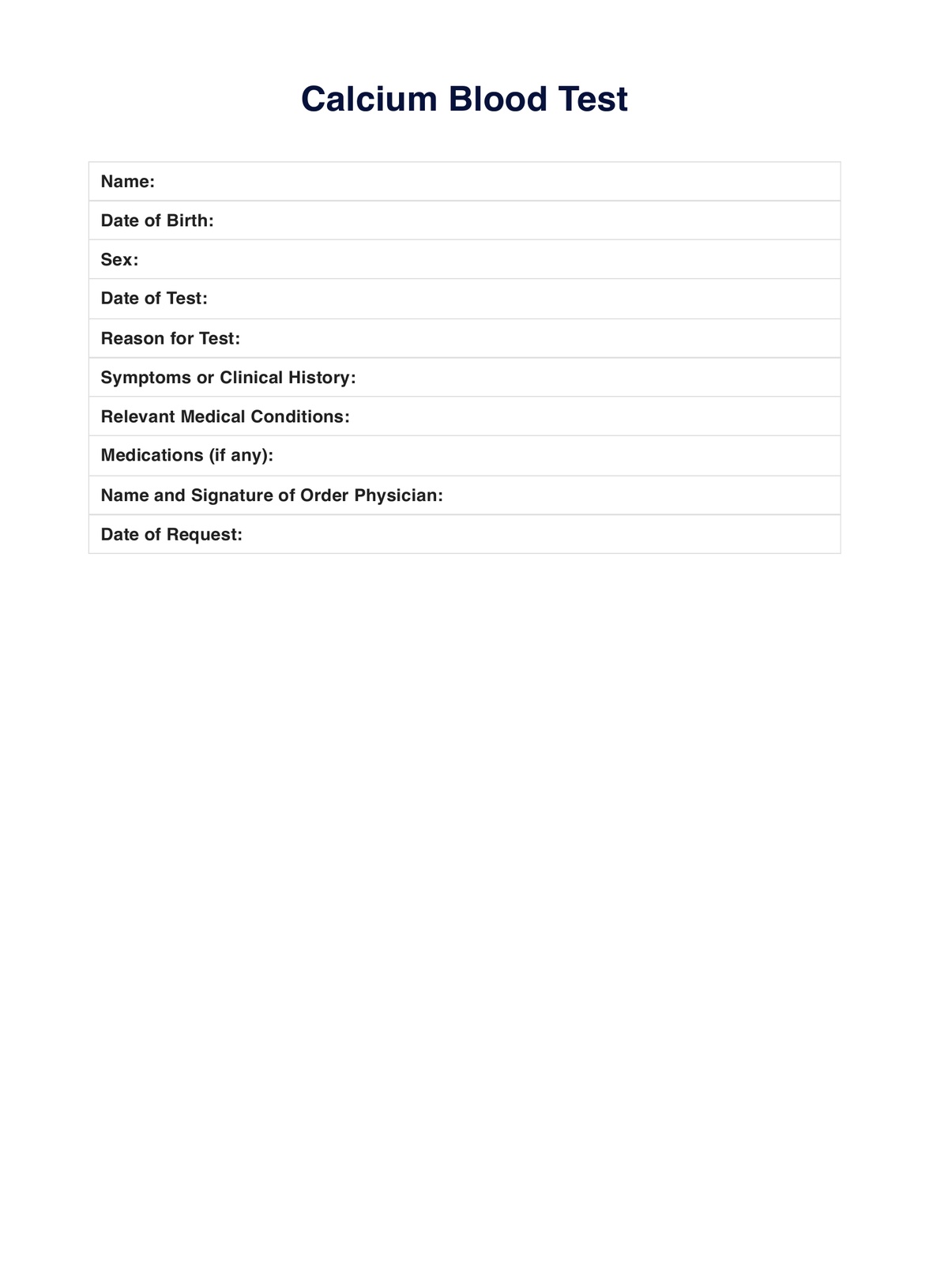CBT Worksheet for Anxiety
Access an engaging CBT Worksheet for Anxiety to support clients in finding relief and improving their well-being.


What is a CBT Worksheet for Anxiety?
Cognitive Behavioral Therapy (CBT) Worksheets for Anxiety are valuable tools used in clinical psychology to help individuals with generalized anxiety disorder, panic disorder, social anxiety disorder, and other related disorders. With these worksheets, they can identify and challenge negative thinking and behaviors that contribute to their anxiety. These CBT anxiety worksheets, which can be part of a broader CBT workbook, are intended to assist people in regulating emotions and thought patterns and developing healthier coping strategies.
Mental health practitioners can use this to provide a structured framework for clients to explore and challenge unhelpful thinking styles and cognitive distortions contributing to persistent fear and negative emotions.
CBT Worksheets for Anxiety are commonly used in conjunction with therapy sessions to assist patients in exploring new coping skills outside of the session. This can help them learn to manage stress, especially during anxiety-inducing situations. These worksheets can also be used as a self-help resource for those unable to attend therapy sessions or as an adjunct to other types of treatment.
CBT Worksheet for Anxiety Template
CBT Worksheet for Anxiety Example
How to use this CBT Worksheet for Anxiety
CBT Worksheets for Anxiety are structured tools that help clients identify, evaluate, and challenge anxiety-producing thoughts while developing healthier coping strategies. Follow our step-by-step guide below to make the most of this resource in your clinical practice:
Step 1: Access or download the template
Click "Use template" to open a customizable template within the Carepatron platform or click "Download" to get a PDF copy of our anxiety CBT worksheet.
Step 2: Analyze situation and physical response
Begin by having clients document a specific anxiety-triggering situation, including contextual details (when, where, and who was involved). Guide them to identify physical sensations experienced during the anxiety episode by checking the relevant symptoms on the worksheet.
Step 3: Examine thoughts and evaluate evidence
Guide clients to record their anxious thoughts in the three-column format provided. The left column captures the automatic thoughts, while the middle and right columns prompt clients to evaluate supporting and contradicting evidence. This cognitive restructuring exercise is fundamental to CBT as it helps clients recognize cognitive distortions and develop more balanced perspectives
Step 4: Analyze behavior and assess coping strategies
Have clients document their behavioral responses to anxiety, including avoidance behaviors. Then guide them to formulate alternative perspectives and identify specific coping strategies they can implement.
Step 5: Implementation and reflection
The final section prompts clients to rate their anxiety levels before and after using the techniques, plan a specific approach-oriented action step, and reflect on what they learned. This process reinforces the connection between thoughts, feelings, and behaviors while documenting progress. The personal notes section allows for additional insights or questions to discuss in future sessions.
Why is this form useful for therapists?
Therapists can incorporate CBT Worksheets for Anxiety into their clients' treatment plans. These worksheets can assist therapists in the following areas:
Education on the complexities of anxiety
The anxiety CBT worksheet can be used to educate clients on the intricate components of anxiety, such as physical responses, thoughts, feelings, and behaviors.
Analyze triggers for anxious thoughts or behaviors
The worksheet becomes invaluable in guiding clients through a comprehensive exploration of anxiety's facets. This analytical process facilitates a deeper understanding of how external factors, internal irrational thoughts, and habitual behaviors contribute to the manifestation of anxiety.
Develop ways to cope with anxiousness
Embedded within the template is the opportunity to collaboratively develop coping strategies tailored to each client's needs, such as creating alternate, more realistic thoughts, using mindfulness techniques, and participating in enjoyable activities. Therapists can guide clients in using the worksheet to uncover and articulate effective coping mechanisms for countering anxious thoughts and behaviors.
Encourage self-reflection and personal growth
Beyond immediate symptom relief, the CBT anxiety worksheet catalyzes profound self-reflection and personal growth. Therapists can leverage this tool to prompt clients to contemplate how their thoughts and behaviors contribute to their anxiety.
Benefits of CBT Worksheets for Anxiety template
Using CBT Worksheets for Anxiety can have a range of benefits, including:
- Increased self-awareness: Individuals can gain a better understanding of their anxiety and how it affects them by identifying and reflecting on their thoughts, emotions, and behaviors.
- Empowerment and motivation: By providing individuals with practical tools and strategies for managing their symptoms, the worksheets can help them control their anxiety more.
- Accountability: Worksheets can assist individuals in tracking their progress over time and identifying areas that may require additional attention or work.
- Targeting cognitive distortions: Cognitive distortions are common in anxiety disorders, influencing thought patterns in negative ways. CBT worksheets can help address these distortions.
- Improved communication: CBT worksheets can help to improve communication between the individual and the therapist, as they provide a common language and framework for discussing anxiety symptoms and treatment strategies.
Commonly asked questions
People can use these worksheets whenever they are experiencing anxiety symptoms, such as excessive worry, fear, or nervousness. They can be used in a variety of settings, such as therapy sessions, classrooms, or at home.
CBT homework typically involves structured activities assigned by a therapist to reinforce learning and promote change outside of therapy sessions. These assignments may include self-monitoring exercises, such as tracking thoughts and feelings, behavioral experiments to test negative beliefs, or practicing cognitive restructuring techniques like identifying and challenging distorted thoughts.
The most effective CBT techniques for anxiety often include cognitive restructuring to challenge and modify anxious thoughts, exposure therapy to gradually confront feared situations or stimuli, and relaxation techniques like deep breathing or progressive muscle relaxation to manage physical symptoms of anxiety. Additionally, behavioral experiments help test the validity of anxious predictions, while problem-solving skills training can address specific stressors contributing to anxiety.


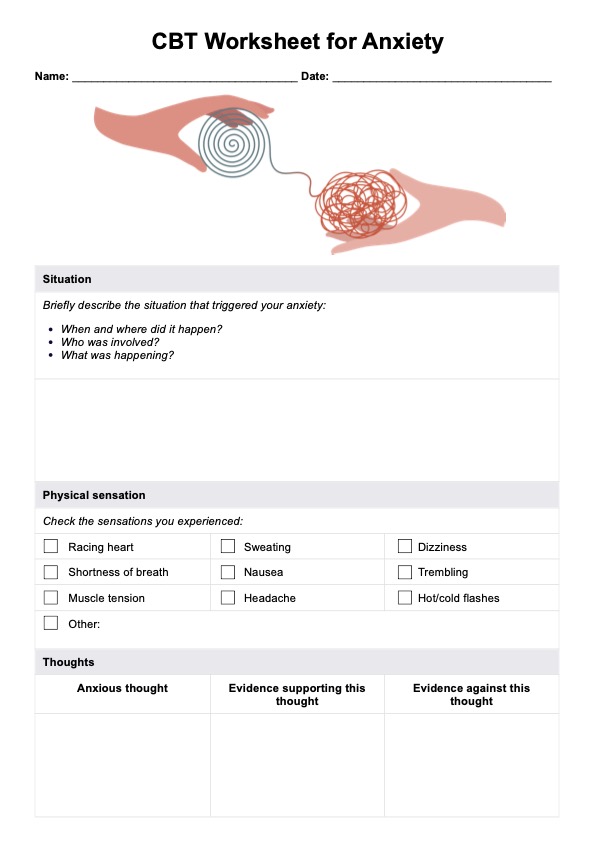
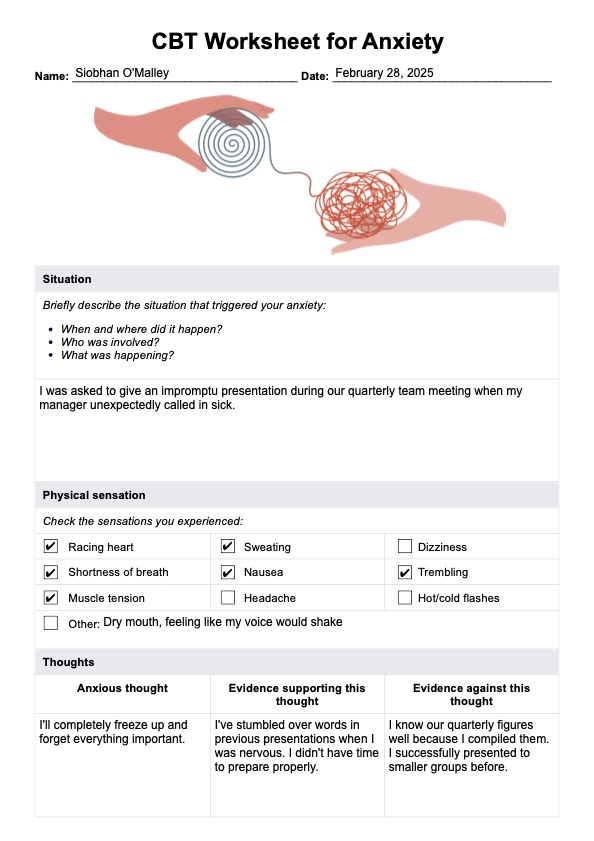















-template.jpg)





















































































